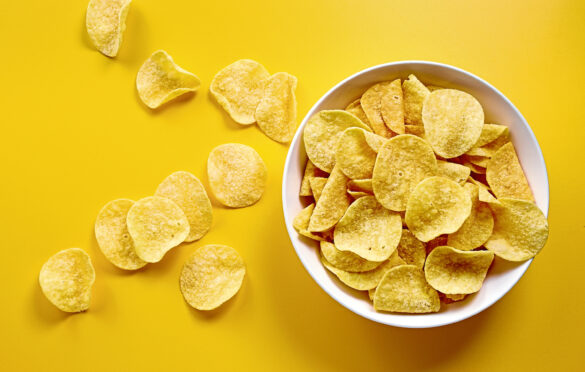
The third most important food crop in the world, and consumed by over a billion people, potatoes are anything but humble. Will Jackson, from the agronomy team at producers Albert Bartlett, tells Alice Hinds the Honest Truth about growing spuds.
How many varieties of potatoes are farmed in the UK?
There are around 5,000 varieties grown around the world, most in Peru, where the potato originated around 8,000 years ago. Varieties come in all shapes, sizes and colours, from white to yellow to red to purple – with some even red or purple inside. In the UK, we are familiar with comparatively few of them, only around 10 varieties account for 40% of the planted potato area.
Maris Piper, which will be a familiar name to many, is still the most commonly grown variety despite being more than 50 years old. Another familiar variety which is still grown after more than 100 years is King Edward.
How many potatoes do we grow each year?
In the UK, there are around 110,000 hectares of potatoes grown, the equivalent of 150,000 football pitches.
Of those, 45% are for fresh consumption, 40% are processed into crisps, chips and other products, and 15% are for seed production for future crops.
What is the perfect growing environment?
Potatoes will grow practically anywhere. Around 80% water, they need moisture to grow, along with sunshine, well drained soils, and dry periods for planting in spring and harvesting in autumn.
Long rest periods for the fields in between potato crops helps keep pests and diseases under control. Scotland, with its temperate climate and natural rainfall is well suited – in fact, Scotland is classified as a high health status area for seed potato production, with Scottish seed potatoes being shipped to many parts of the world each year.
How long does it take for potatoes to grow?
Once planted, they start to emerge from the ground after three to four weeks, and then start forming new daughter tubers three to five weeks later.
Once they have grown to the desired size, the foliage is either mechanically removed or desiccant applied. The potatoes are then left for three to four weeks before harvesting to allow the skin of the tubers to mature, which protects them during harvest and storage.
Salad potatoes, for example, need around 80 to 120 days from planting to harvest, and maincrop around 150 to 180 days.
What about the harvesting?
Most potatoes are harvested by specialised machines nowadays, which lift all of the potatoes and soil, sieving and separating out the soil, stone, clod and foliage.
A team riding on the back then do a preliminary sort of the crop before it is transferred to a conveyor belt to boxes on a trailer driving alongside the harvester. These harvesters can harvest half a million kilos of potatoes a day!
However, an exception is Jersey Royal potatoes, grown on steep, south-facing slopes of the island, called cotils. They largely have to be harvested by hand, so these slopes produce the earliest crops of Jersey Royal.
If my potato has started to sprout in the fridge, can I plant it?
It is possible but only plant certified seed from garden centres to ensure the healthy plants, as the seed will have met certain disease tolerances.
You can also simply cut off the sprout and eat the potato – it is still just as good as ever. Potatoes that are sprouting or have skin imperfections are perfectly good to eat provided you cut off the bad bits. Occasionally potatoes turn green, and they shouldn’t be eaten.
How healthy are potatoes?
They are virtually fat and saturated-fat free, very low in salt and contain no gluten, so they are good for you.
Unlike its fellow starchy foods, rice and pasta, the potato is also high in vitamin C, providing the nation with an important 15% of its recommended daily allowance. It also a source of Vitamin B1, as well as providing thiamine, potassium, folate, iron, magnesium and zinc.
Unlikely as it sounds, the humble potato is a richer source of vitamins and minerals than many fruits and vegetables.
And the most unusual or interesting facts you have learned?
That they are packed full of vitamins, seaweed is still used as fertiliser on fields in Ayrshire and Jersey, and the carbon footprint of potatoes is much lower than many other crops. Potatoes are not related to sweet potatoes, but they are from the same family as tomatoes. Oh, and potatoes were the first vegetable grown in space!

Enjoy the convenience of having The Sunday Post delivered as a digital ePaper straight to your smartphone, tablet or computer.
Subscribe for only £5.49 a month and enjoy all the benefits of the printed paper as a digital replica.
Subscribe